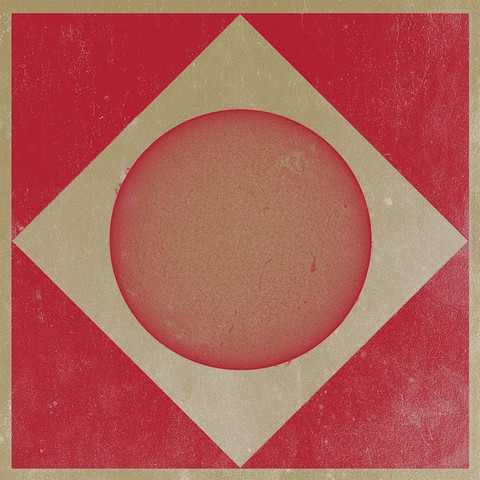<iframe style="border: 0; width: 100%; height: 142px;" src="http://
bandcamp.com/EmbeddedPlayer/album=1069843185/size=large/bgcol=ffffff/linkcol=0687f5/tracklist=false/artwork=small/transparent=true/" seamless>
Twelve minutes into the rumbling submersible axe drones and folkloric stream-of-consciousness poetry, White 1‘s ‘My Wall’ culminated with Julian Cope charging Sunn O))) – "In stillness O’Malley and Anderson play on… play on… play on…" Since opening the floodgates to collaboration and cross-pollination back on White 1 in 2003, Sunn O))) haven’t let the man down, never turning their backs to collaborators, and sharing the weight of a million ringing ear drums with an ever-increasing backlog of sonic co-conspirators, branching out from that initial monochrome Grimmrobe sludge drawl to take in a growing spectrum that now includes pipe organs as of Dømkirke, brass, strings & choirs as of Monoliths & Dimensions and the multifaceted timbres of Oren Ambarchi as of Black One.
The most grimm of duos’ latest release was put together with the almost impossibly pliable Ulver from Norway, whose music has travelled even wider, faster and further than their doom-obsessed American cousins throughout their now-twenty year tenure. They’ve become so far removed from those initial black metal origins – having taken in mid-60s rock revivalism, trip-hop, chamber music and ambient glitch along the way – that Ulver now bring with them only the expectation of the unexpected. Well, that and the half of Grumbling Fur known as Daniel O’Sullivan (who has previously played in Sunn O)))’s live line-up, played with Ulver’s Krystoffer Rygg and O’Malley in Æthenor, and is indeed an active current member of Ulver). So while this disc undoubtedly comes already encumbered with suppositions of becloaked Scandinavian gloom and rectum-loosening doom drone, Terrestrials should first be seen as a meeting of chameleonic polyglots, and the result is most unexpectedly beautiful and luminescent.
The initial collaborative recording actually took place back in 2008, before Sunn O))) Monoliths & Dimensions was complete, perhaps suggesting it may even have even started life a cutting room floor reject for Monoliths. The tapes have since been built upon and rebuilt upon by Ulver, with occasional input from O’Malley, eventually taking shape as a trio of mid-length tracks: the lethargic overture of ‘Let There Be Light’, the super-slow-motion black metal of ‘Western Horn’, and the climactic mutilated industrial metal song, ‘Eternal Return’.
It’s easy to construe this music as conjuring post-apocalyptic apparitions. Mirages of Frank Herbert’s barren Arrakas, or tragic Tarkovsky-esque wastelands easily swim across the foreground of the opening track. However as the title suggests, ‘Let There Be Light’ could just as easily represent a languid, celestial act of birth and creation, or the sight of a slow rising new sun. A tremolo synth line emerges from the ebbing silence, courtesy of Daniel O’Sullivan. Gradually, the scraping of strings, very nearly almost out of earshot, joins him and an uncharacteristically effervescent O’Malley guitar loop enters. A lone trumpet lets out a resolute, hopelessly heroic bugle, and the crescendo stirs to life. After eight minutes of plodding high-end upward motion, Greg Anderson’s explosive first bass strike hits, along with the clutter of drums and a brass-led upsurge, very much the cousin to Monoliths’ tribute to Mrs Coltrane and opus, ‘Alice’.
‘Western Horn’ uses marginally slighter instrumentation. It’s ostensibly a typically drone doom guitar and bass battle, with tinkles of O’Sullivan’s Fender Rhodes, yet closer listening reveals some distant semblance of those weeping violins, pianos and mysterious synthetic sounds. It’s the same symphonic meticulousness that’s made both Ulver’s genre-jumping excursions and Sunn O)))’s very hardest core of drone so long-lasting. As Anderson fires out a familiarly perplexing and cyclical chord sequence of droning bass feedback, the distorted guitar loops begin to take on the stammering jangle of tremolo picking, like some isolated channel from a Darkthrone cut. It plays out like a ceremonial thaw or exorcism. As if discovering a long lost man frozen in ice, then noticing him adorned with corpse paint, and clutching an overused copy of Xasthur’s Nocturnal Poisoning in his cold hands.
‘Eternal Return’ is an unabashedly grand finale, spending the first half meditating on latent Spaghetti western atmospherics (something often heavily hinted at by doom-influenced Californian drone suppliers, Barn Owl). Finally fully formed violin and viola lines meet the omnipresent bass drones and a synthesised marimba figure, while O’Malley’s cinematic Pino Rucher guitar seems to harken the approach of some hooded, unnamed stranger. Most striking, is the second half wherein an actual song plays out – with a Kristoffer Rygg lyric musing on the holy land, the Nile, the Red Sea – all built on the same almost-cyclical, near-palindromic patterns that make up the Sunn O))) back catalogue, yet this time played out with piano and strings. The song defies deconstruction, as with Grumbling Fur’s own amorphous coda from Glynnaestra, ‘His Moody Face’, or the depths of Neurosis’ most drawn out vocal tracks. The piece reaches its summit, ultimately receding towards dissonance before inverting and collapsing in on itself like the cosmological big crunch that inevitably shall follow all.
As with Ulver’s Messe I.X – VI.X or Monoliths & Dimensions the devil’s what brought them here, but we find God in the details. The arrhythmic sluggish sprawl of those downtuned, feedbacking axes is still developing as a compositional tool, continuing to open up space for strings to scrape, brass to cry and keys to shower into. Those Sunn O))) long-hairs are finally following their bliss out the other side of the abyss they entered via that gaping tunnel on Monoliths & Dimensions’ cover, and the able hands and sly smiles of Ulver, Rygg and O’Sullivan greet them with signature erudite adaptability across Terrestrials’ note-perfect 35-minute brevity. The trajectories of these musicians are all following the same path, gradually advancing from the rancid nightmares and into these waking dreams; dreams that linger long into the light of day.


